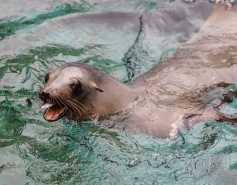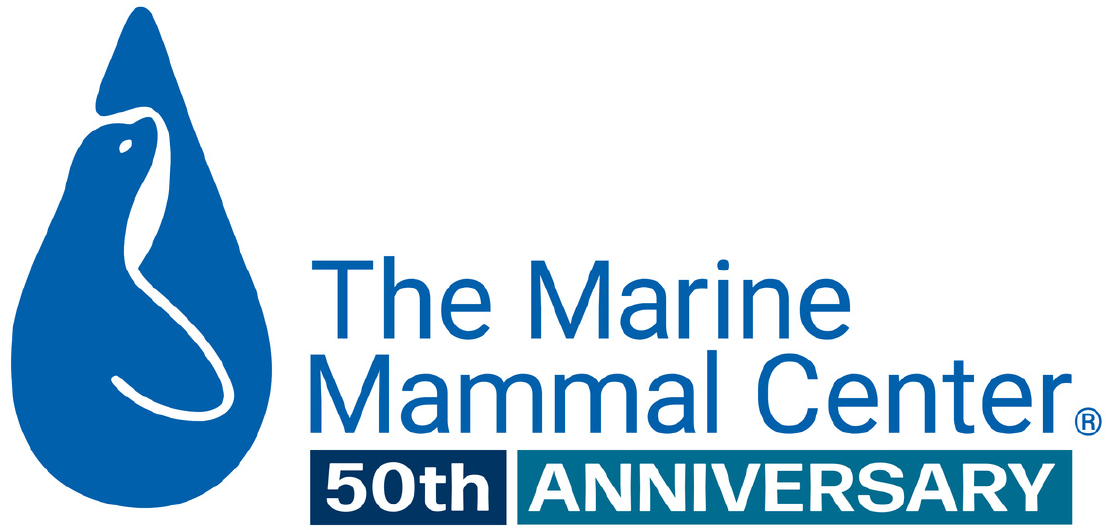
Plasmatic Coagulation and Fibrinolysis in Healthy and Otostrongylus-Affected Northern Elephant Seals
- Lungworm
Abstract
Background: Prepatent Otostrongylus arteritis results in hemorrhagic diathesis in free-ranging Northern elephant seals (Mirounga angustirostris) attributed to aberrant larval migration of the lungworm, Otostrongylus circumlitus. Clinical signs are often nonspecific, including lethargy, anorexia, and blepharospasm, but can progress to spontaneous frank hemorrhage and death within 72 hours of onset. Previously published case reports describe coagulopathy with prolonged PT and APTT, normal to elevated platelet counts, normal antithrombin concentrations, and low concentrations of fibrinogen degradation products. Disseminated intravascular coagulation was proposed as the cause of hemorrhage, but is inconsistent with some of the reported clinicopathologic changes.
Objective: The purpose of this study was to compare plasmatic coagulation and fibrinolysis in healthy and Otostrongylus-affected elephant seals, in order to identify potential therapy. We hypothesized that hyperfibrinolysis contributed to hemorrhage in these cases.
Methods: Citrated plasma samples were collected from 3- to 4-month-old Northern elephant seals in a wildlife rehabilitation hospital. The sampled population included 25 healthy, prerelease seals and 32 clinically ill seals diagnosed with presumptive Otostrongylus arteritis. Twenty-one of the included seals had Otostrongylus infestation confirmed at necropsy. Standard coagulation tests and plasma thromboelastography were performed for a complete assessment of coagulation and fibrinolysis.
Results: Northern elephant seals with definitive Otostrongylus infestation were hypocoagulable and hypofibrinolytic compared to healthy controls.
Conclusions: Results were most consistent with disseminated intravascular coagulation. Treatment with antifibrinolytic drugs to control hemorrhage may be unrewarding; alternative therapies such as plasma transfusions or coagulation factor concentrates should be investigated.
Kaye, S., Johnson, S., Rios, C., Fletcher, D.J. 2017. Plasmatic coagulation and fibrinolysis in healthy and Otostrongylus-affected Northern elephant seals (Mirounga angustirostris). Veterinary Clinical Pathology 43/4 (2017): 589-596.
Carlos Rios
Related Publications
{"image":"\/Animals\/Patients\/California sea lions\/csl-by-bill-hunnewell-c-the-marine-mammal-center-1.jpg","alt":"California sea lion eating a fish","title":"New Technique for Diagnosing Lung Parasite Infections in Sea Lions","link_url":"https:\/\/www.marinemammalcenter.org\/publications\/new-technique-for-diagnosing-lung-parasite-infections-in-sea-lions","label":"Research Paper"}

{"image":"\/Animals\/Patients\/Elephant seals\/cropped-images\/es-by-bill-hunnewell-c-the-marine-mammal-center-3-2-1214-3454-3512-1600891002.jpg","alt":"northern elephant seal","title":"Diagnostic Tests for Lungworm-Infected Northern Elephant Seals","link_url":"https:\/\/www.marinemammalcenter.org\/publications\/diagnostic-tests-for-lungworm-infected-northern-elephant-seals","label":"Research Paper"}

{"image":"\/Animals\/Wild\/Humpback whale\/cropped-images\/humpback-whale-sea-lions-photo-c-bill-hunnewell-190-2-2774-2167-1659123832.jpg","alt":"humpback whales and California sea lions feeding","title":"Aquatic Mammals","link_url":"https:\/\/www.marinemammalcenter.org\/publications\/aquatic-mammals","label":"Research Paper"}

{"image":"\/Animals\/Patients\/Guadalupe fur seals\/2021\/cropped-images\/gfs-skyrocket-by-bill-hunnewell-c-the-marine-mammal-center-noaa-permit-18786-2-112-1667-1302-1625765450.jpg","alt":"Guadalupe fur seal Skyrocket","title":"Vasculitis and Thrombosis due to the Sea Lion Lungworm in a Guadalupe Fur Seal","link_url":"https:\/\/www.marinemammalcenter.org\/publications\/vasculitis-and-thrombosis-due-to-the-sea-lion-lungworm-in-a-guadalupe-fur-seal","label":"Research Paper"}

Vasculitis and Thrombosis due to the Sea Lion Lungworm in a Guadalupe Fur Seal
Read MoreRecent News
{"image":"\/Animals\/Patients\/Hawaiian monk seals\/2025\/cropped-images\/d-ru28release-exam-at-ke-kai-ola111025photo-by-giancarlo-rulli-c-the-marine-mammal-center-noaa-permit-24359-0-0-1270-992-1764620886.jpg","alt":"","title":"Bird Flu Vaccine Trial Offers Hope for Protecting Hawaiian Monk Seals","link_url":"https:\/\/www.marinemammalcenter.org\/news\/bird-flu-vaccine-trial-may-offer-hope-for-protecting-hawaiian-monk-seals","label":"News Update","date":"2025-12-01 08:13:00"}

Bird Flu Vaccine Trial Offers Hope for Protecting Hawaiian Monk Seals
December 1, 2025
Read More{"image":"\/Animals\/Patients\/Hawaiian monk seals\/2021\/hms-pp08-by-sheila-latta-c-the-marine-mammal-center-noaa-permit-18786.jpg","alt":"Hawaiian monk seal","title":"The New York Times: Inside the Bird-Flu Vaccine Trial for Monk Seals","link_url":"https:\/\/www.marinemammalcenter.org\/news\/the-new-york-times-inside-the-bird-flu-vaccine-trial-for-monk-seals","label":"In the News","date":"2025-12-01 01:00:00"}

The New York Times: Inside the Bird-Flu Vaccine Trial for Monk Seals
December 1, 2025
Read More{"image":"\/Animals\/Wild\/Sea otter\/so-wild-morro-bayphoto-c-brian-simuro-20.jpeg","alt":"Sea otter and pup","title":"Watch a Sea Otter Pup Reunite With Its Mother","link_url":"https:\/\/www.marinemammalcenter.org\/news\/watch-sea-otter-pup-reunite-with-its-mother","label":"News Update","date":"2025-11-14 10:35:41"}

{"image":"\/Animals\/Wild\/Sea otter\/sea-otter-photo-c-brian-simuro.jpeg","alt":"Sea otter","title":"AP News: Baby sea otter is reunited with mother in central California after dramatic rescue","link_url":"https:\/\/www.marinemammalcenter.org\/news\/ap-news-baby-sea-otter-is-reunited-with-mother-in-central-california-after-dramatic-rescue","label":"In the News","date":"2025-11-14 09:46:34"}

AP News: Baby sea otter is reunited with mother in central California after dramatic rescue
November 14, 2025
Read More
